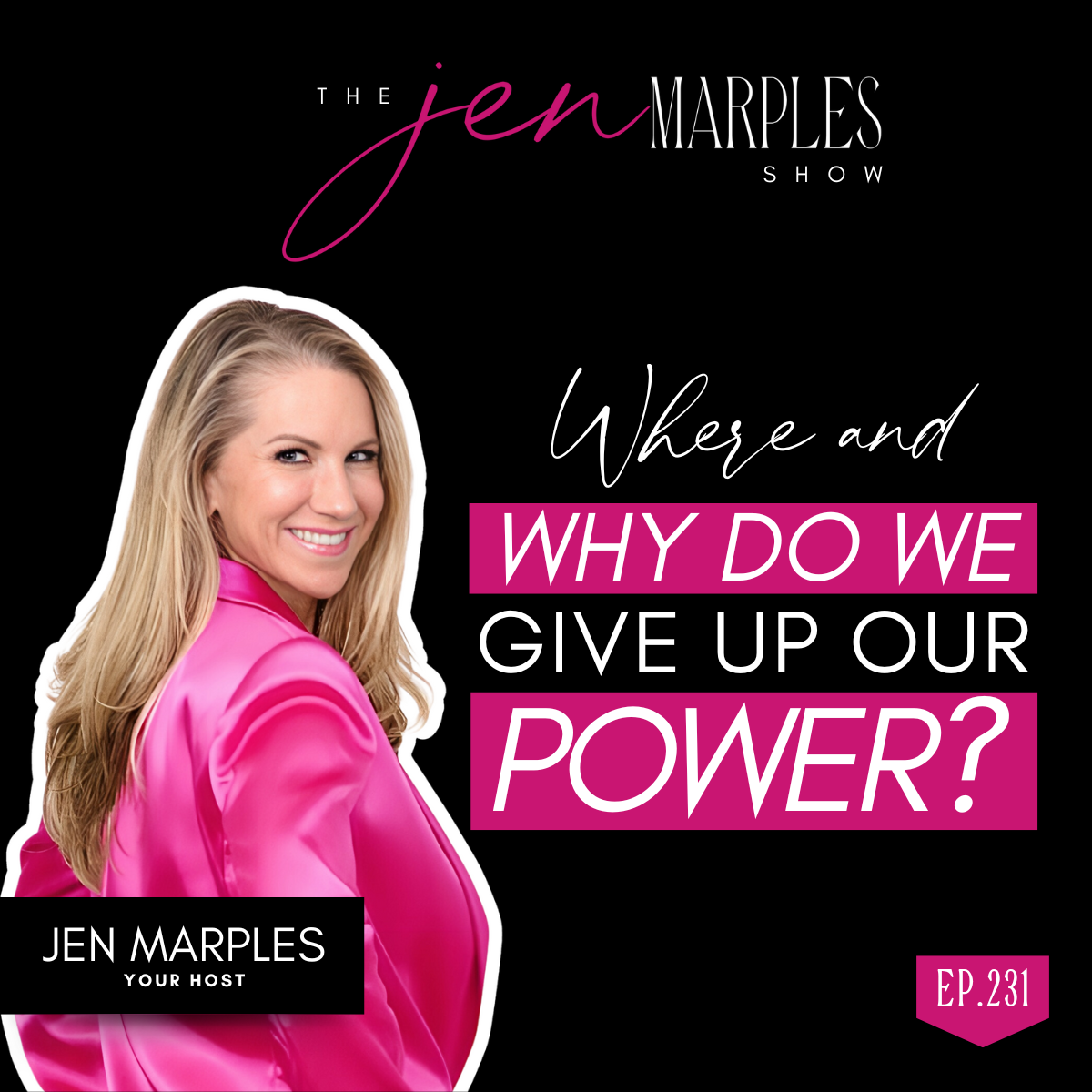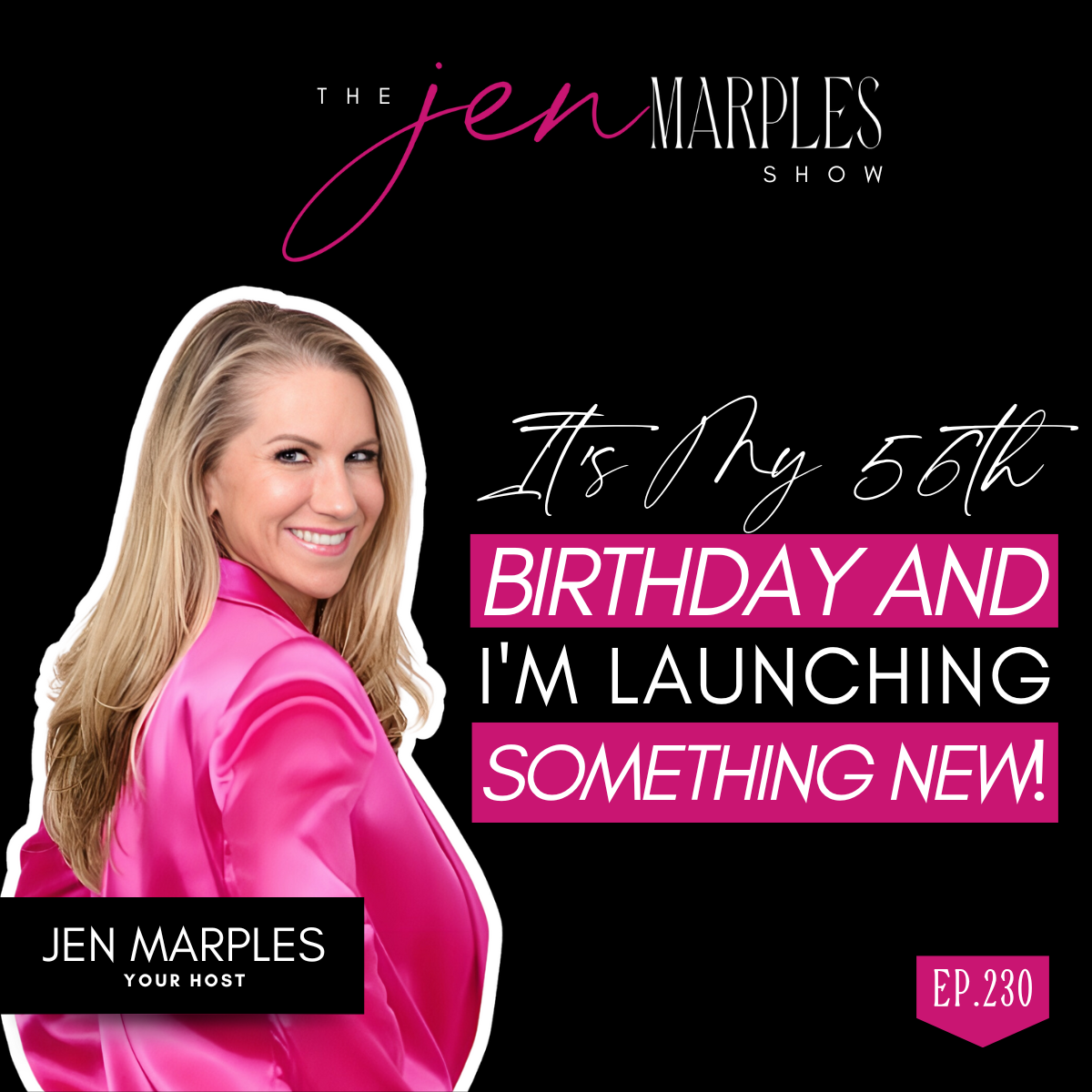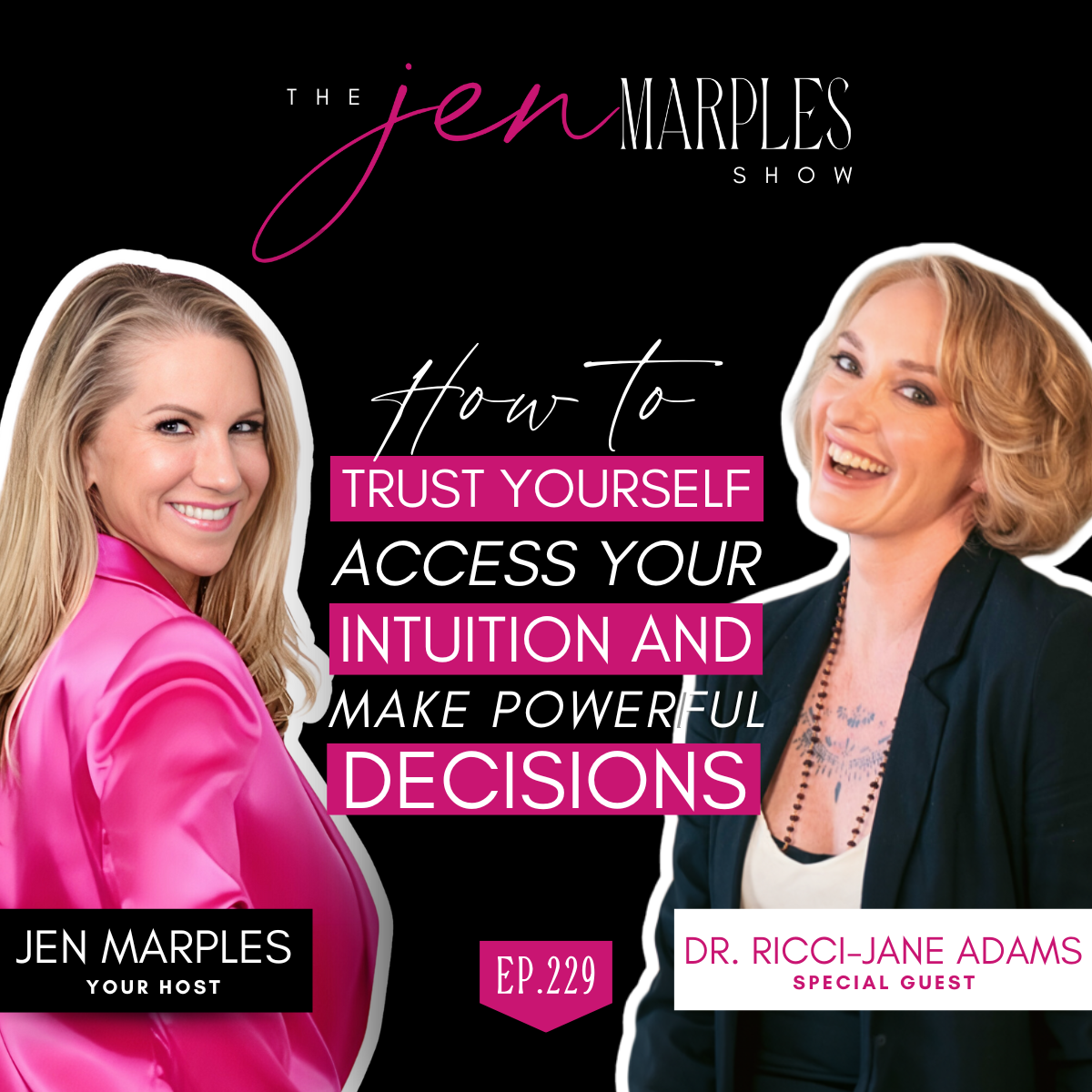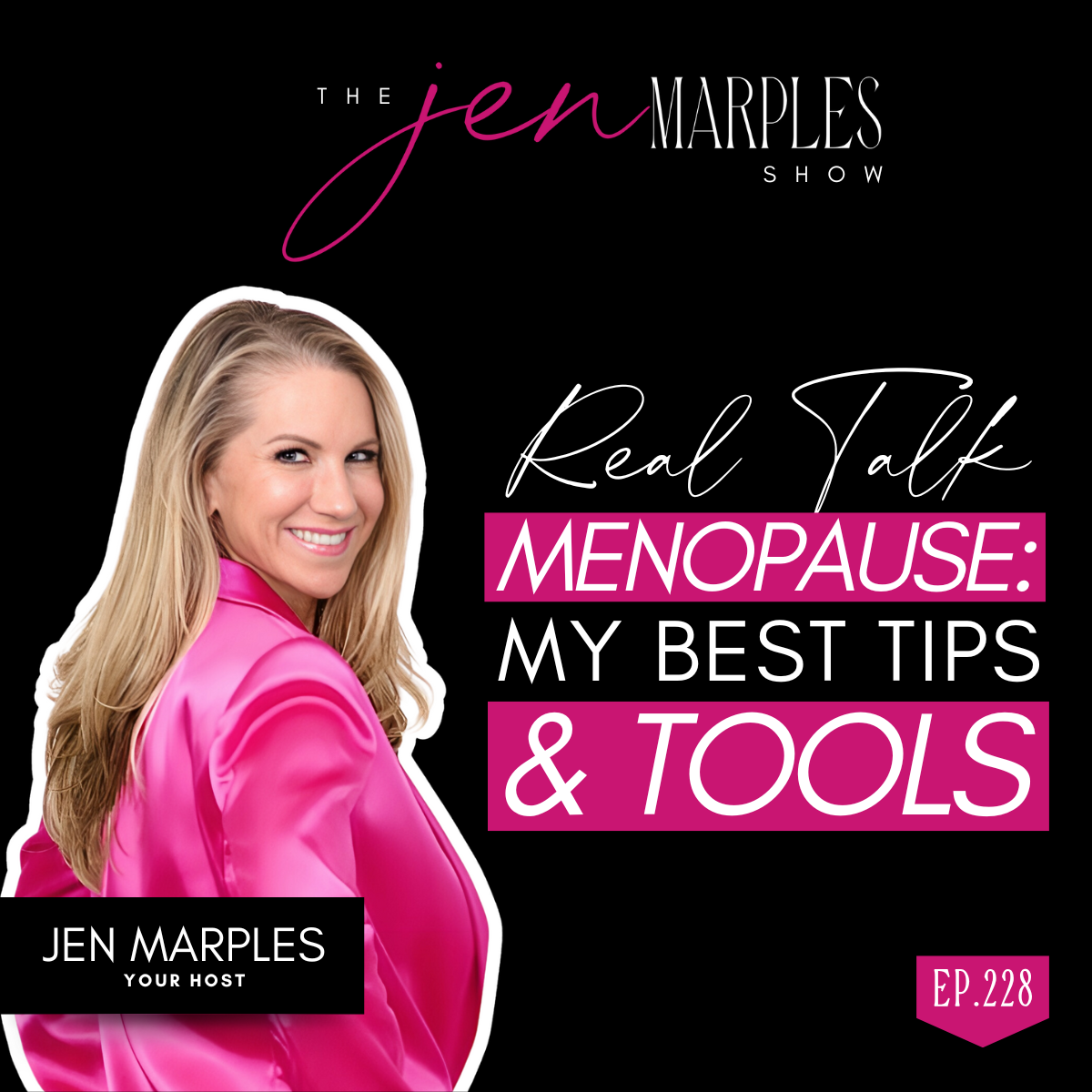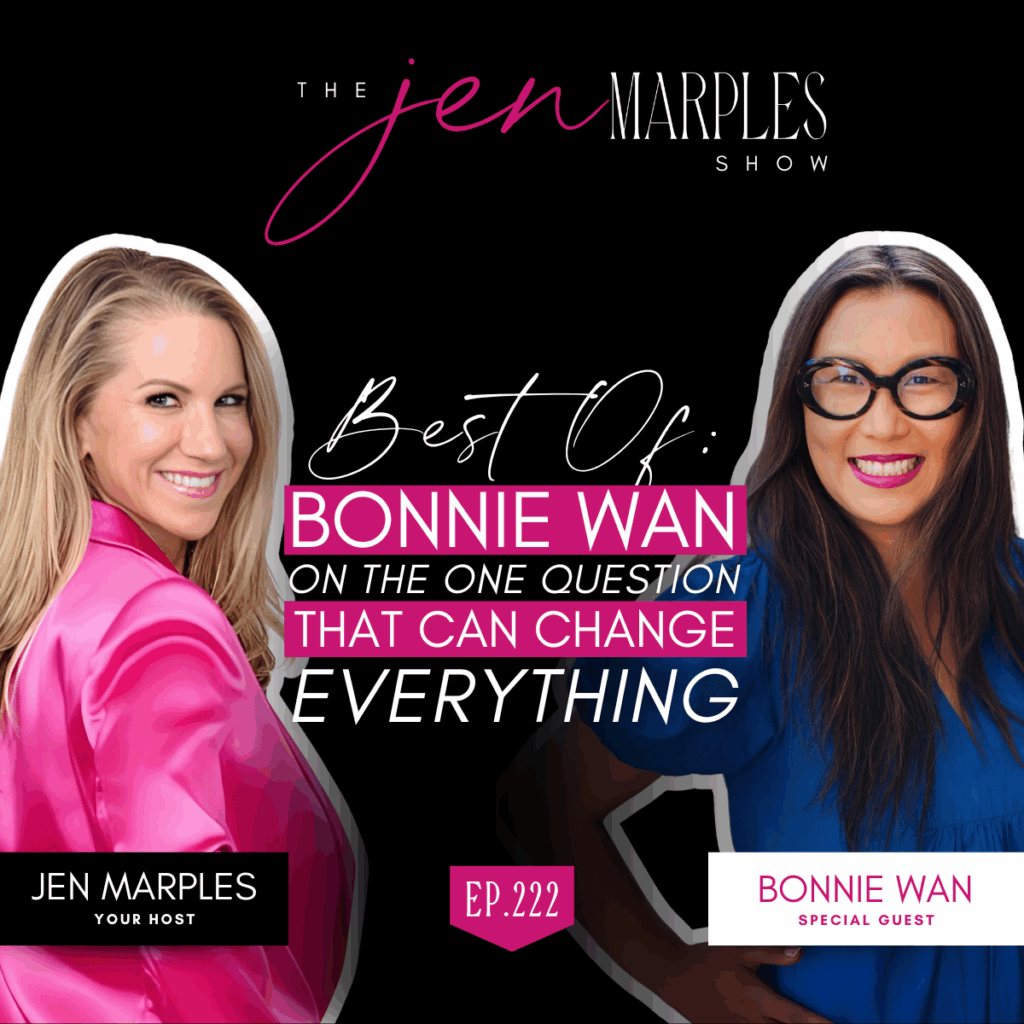
This Best Of replay features one of my most popular guests, Bonnie Wan, author of “The Life Brief” – and trust me, this conversation will change how you think about creating the life you actually want. Bonnie’s a brand strategist who spent decades helping major companies like BMW and Comcast get crystal clear on who they are, but when her own marriage hit rock bottom with three kids under five, she applied those same penetrating questions to her own life. The result? A framework that saved her marriage, transformed her family, and can unlock what you really want too.
If you’ve ever felt stuck in the messiness of midlife, overwhelmed by all the roles you’re playing, or afraid to ask yourself what you actually want because the answer might scare you, this episode is for you. Bonnie breaks down her simple but profound process for cutting through the chaos to find your essence – and shares the raw story of how one question in a supermarket parking lot changed everything. Plus, she reveals why the boldest thing we can do in midlife isn’t necessarily going bigger, but sometimes stepping off the treadmill entirely.
Key Takeaways:
- The power of asking “What do I really want?” & how it can cut through years of confusion and fear
- The life brief framework: A simple 3-step process (get messy, get clear, get active) that creates lasting change
- Why viewing life in 5-6 year chapters gives you permission to reinvent yourself again and again
- Why the most courageous act in midlife might be slowing down, not speeding up
- How The Life Brief method works for parenting challenges, marriage struggles, and career decisions.
Bonnie Says: You’re Not Too F***ing Old! To create the life you want!
How to Cut Through Life’s Chaos and Get Crystal Clear on What You Really Want
Introduction
Picture this: You’re sitting in your car in a grocery store parking lot, rain pounding on the roof, and you literally can’t move. Not because you’re physically stuck, but because the weight of everything you’re carrying has finally become too much. Your marriage feels more like a business partnership. You’re managing everyone else’s needs while your own desires remain buried under endless to-do lists. Sound familiar?
This scenario isn’t fiction—it’s exactly what happened to brand strategist Bonnie Wan, whose breakdown became the breakthrough that saved her marriage and created a revolutionary approach to life design. In a recent interview, she shared how she applied the same strategic thinking she used for Fortune 500 companies to solve her personal crisis, creating what she calls “The Life Brief.”
This article is for you if you’re feeling overwhelmed by life’s messiness, questioning your relationships or career path, or simply craving more clarity about what you actually want. Whether you’re a busy parent, career professional, or someone navigating midlife transitions, these insights will help you cut through the noise and create meaningful change.
Prerequisites
Are You Ready for This?
Before we dive into the method, ask yourself: Are you tired of living on autopilot? Do you find yourself managing everyone else’s needs while your own dreams collect dust? If you’re nodding yes, then you’re ready to do the work that most people avoid—the scary but necessary work of getting honest about what you want.
This process isn’t about making dramatic life changes overnight. It’s about creating clarity first, then taking aligned action. You don’t need to be in crisis mode to benefit from this approach, but you do need to be willing to sit with uncomfortable questions and honest answers.
What You’ll Need
The beauty of this method lies in its simplicity. Here’s what you need:
- 10-15 minutes of uninterrupted time
- A notebook or journal
- A quiet space where you won’t be disturbed
- Permission to write without editing or judgment
- Willingness to ask yourself hard questions
- An open mind about what might emerge
Step-by-Step Guide
Step 1: Stop the Productivity Addiction and Create Space for Mess
Most of us live in constant motion, checking boxes and managing endless lists. We’ve become addicted to productivity, believing that staying busy means we’re making progress. But here’s the problem: when you never stop moving, you never give yourself space to think about whether you’re moving in the right direction. You might be efficiently climbing a ladder that’s leaning against the wrong wall. The first step in getting clear on what you want requires you to hit pause on all the doing and create space for some necessary messiness. This means stepping away from your phone, turning off notifications, and giving yourself permission to not be productive for a few minutes. It means resisting the urge to fill every quiet moment with activity and instead allowing thoughts and feelings to surface naturally.
Quick Recap: Before you can get clear, you need to get messy by creating space for honest reflection.
Key Actions: • Find 10 minutes where you won’t be interrupted by family, work, or devices • Put your phone in another room or on airplane mode • Sit somewhere comfortable with just a pen and paper • Give yourself permission to not accomplish anything during this time • Notice any resistance to “just sitting” and acknowledge it without judgment • Remember that this isn’t laziness—it’s essential prep work for clarity
Step 2: Ask the Penetrating Question That Changes Everything
There’s one question that cuts through years of confusion and gets straight to your core desires: “What do I really want?” But here’s where most people get it wrong—they answer with their logical mind or what they think they should want. The power of this question lies in asking it from your heart, not your head. You’re not looking for what your parents want for you, what society expects, or what makes logical sense given your current situation. You’re seeking the raw, unfiltered truth about your deepest desires. This question works because our brains are wired to be good students—when presented with a question, we automatically want to provide an answer. The key is to let whatever comes up be exactly what it is, without immediately dismissing it as unrealistic or inappropriate.
Quick Recap: The right question, asked from the heart, will bypass mental barriers and reveal your authentic desires.
Key Actions: • Write “What do I really want?” at the top of your page • Let the question sit in your mind for 30 seconds before writing anything • Write your first gut reaction, even if it seems silly or impossible • Keep writing whatever comes up for 5-10 minutes without stopping • Don’t edit, cross out, or judge what appears on the page • If you get stuck, ask the question again and keep writing • Notice any answers that make you slightly uncomfortable—those are often the most important ones
Step 3: Write Without Editing to Uncover Hidden Truths
The magic happens when you give yourself permission to write without editing, judgment, or censorship. Most people kill their breakthrough insights before they ever make it to paper because they immediately decide an idea is impractical or inappropriate. But your job right now isn’t to figure out how to make things happen—it’s simply to discover what’s true for you. When you write without stopping to evaluate or edit, you bypass your inner critic and connect with deeper wisdom. This process allows patterns to emerge that you might not see otherwise. You might start by thinking you want a divorce, only to discover what you really crave is more meaningful time with your partner. Or you might think you hate your job when what you actually want is more creative freedom within your current role.
Quick Recap: Unfiltered writing reveals patterns and truths that edited thinking never could.
Key Actions: • Set a timer for 10 minutes and don’t stop writing until it goes off • If you get stuck, write “I’m stuck” and keep going • Don’t worry about grammar, spelling, or making sense • Let contradictory thoughts exist on the same page • Write in stream-of-consciousness style without planning what comes next • If uncomfortable emotions come up, write about them too • Remember that no one else will read this—it’s for your eyes only
Step 4: Look for Themes That Cut Through Surface Problems
Once you have your raw material on paper, step back and look for themes. Often, what appears to be multiple different problems actually stems from one core issue. In the interview, Bonnie initially thought she wanted a divorce, but when she looked at her written responses, she realized everything pointed to one theme: time. She wanted more meaningful time with her children, quality time with her husband, and time for herself. This revelation completely shifted her perspective from “my husband is the problem” to “our relationship with time is the problem.” Looking for themes helps you move from symptoms to root causes. Instead of trying to fix ten different things, you can focus your energy on addressing the one thing that will create the biggest positive ripple effect across all areas of your life.
Quick Recap: Surface problems often mask deeper themes—find the pattern that connects everything.
Key Actions: • Read through everything you wrote without trying to fix or change it • Circle or highlight words and phrases that repeat or feel important • Look for connections between seemingly different desires • Ask “What’s the common thread running through all of this?” • Notice if your “problems” are actually symptoms of a deeper need • Write down the main theme in one or two words at the bottom of your page
Step 5: Create Your Sharp and Sticky Life Brief
Now comes the strategic part—distilling your discoveries into what brand strategists call a “sharp and sticky” statement. This isn’t a mission statement or a long paragraph of goals. It’s a short, memorable phrase that captures the essence of what you want and can guide your decisions going forward. Think of it as your North Star—simple enough to remember but powerful enough to drive action. The best briefs are both specific enough to be meaningful and broad enough to apply to multiple areas of your life. For example, “take our time” was both specific (reclaim control over how time is spent) and broad (applicable to marriage, parenting, and career decisions). Your brief should feel slightly uncomfortable in a good way—like it’s challenging you to grow while also feeling deeply true.
Quick Recap: Your life brief should be memorable, meaningful, and broad enough to guide decisions across multiple life areas.
Key Actions: • Take your main theme and turn it into 2-4 words that feel powerful • Test different phrases until you find one that gives you energy • Make sure it’s specific enough to guide decisions but broad enough to apply everywhere • Write it somewhere you’ll see it daily • Share it with someone you trust (like your partner) to create accountability • Use it as a filter for saying yes or no to opportunities and requests
Step 6: Apply Your Brief to Transform Relationships and Decisions
The real power of your life brief emerges when you start using it as a decision-making filter. Every opportunity, request, or choice gets measured against your brief. Does this align with what I really want? Does this support my core theme or distract from it? This approach works for everything from major life changes to daily schedule decisions. You can also apply this process to specific relationships or challenges. Create a brief for your parenting approach, your marriage, or your career. The key is to let your brief guide your actions rather than just being nice words on paper. When you’re clear on what you want and committed to honoring it, you’ll find that opportunities align and obstacles become stepping stones rather than roadblocks.
Quick Recap: Your brief becomes a powerful decision-making tool that aligns your actions with your authentic desires.
Key Actions: • Write your brief on a card and keep it where you’ll see it often • Before making decisions, ask “Does this support my brief?” • Use your brief to evaluate current commitments and activities • Share your brief with family members and ask for their support • Create additional briefs for specific areas like parenting or career • Notice how different opportunities feel when measured against your brief • Take one concrete action this week that aligns with your brief
Conclusion
The path from confusion to clarity doesn’t require dramatic life changes or years of therapy. It requires the courage to ask yourself one honest question and the discipline to listen to the answer. When you create space for messiness, write without judgment, and distill your discoveries into a clear brief, you give yourself a roadmap for living authentically.
Remember, this isn’t a one-time exercise. Life evolves, and so will your brief. The woman who needs more time today might need more adventure in five years. The key is developing the skill to regularly check in with yourself and adjust your course as needed.
Your next steps are simple but powerful:
- Schedule 15 minutes this week to sit quietly with pen and paper
- Ask yourself “What do I really want?” and write without editing
- Look for themes in your responses rather than getting lost in details
- Create a 2-4 word brief that captures your core desire
- Share your brief with someone you trust for accountability
- Use your brief to evaluate one decision or opportunity this week
- Take one action that aligns with your newly discovered clarity
The grocery store parking lot moment doesn’t have to be a breakdown—it can be the beginning of your breakthrough. You already have everything you need to start. The only question left is: What do you really want?
Learn more about Jen Marples at https://www.jenmarples.com
Want to work with Jen? Book a complimentary 20-minute call HERE.
Follow Jen @jenmarples on Instagram, LinkedIn, TikTok and YouTube
Subscribe to Jen’s Newsletter
Unedited AI Transcript Here
CONNECT WITH BONNIE WAN:
